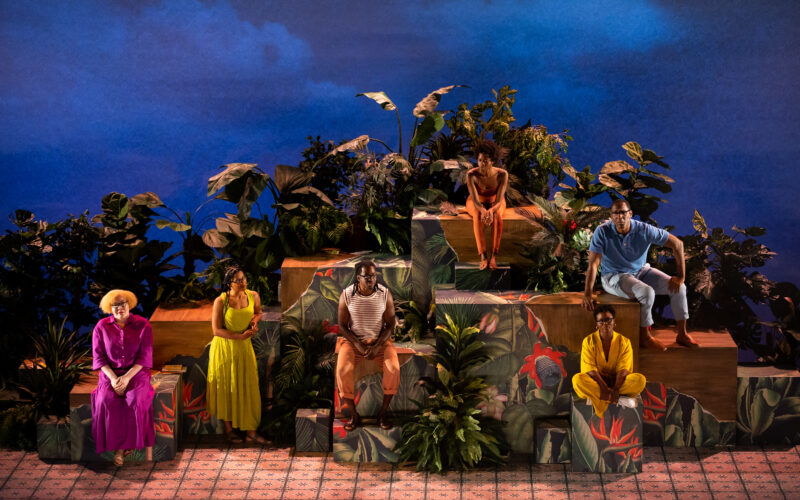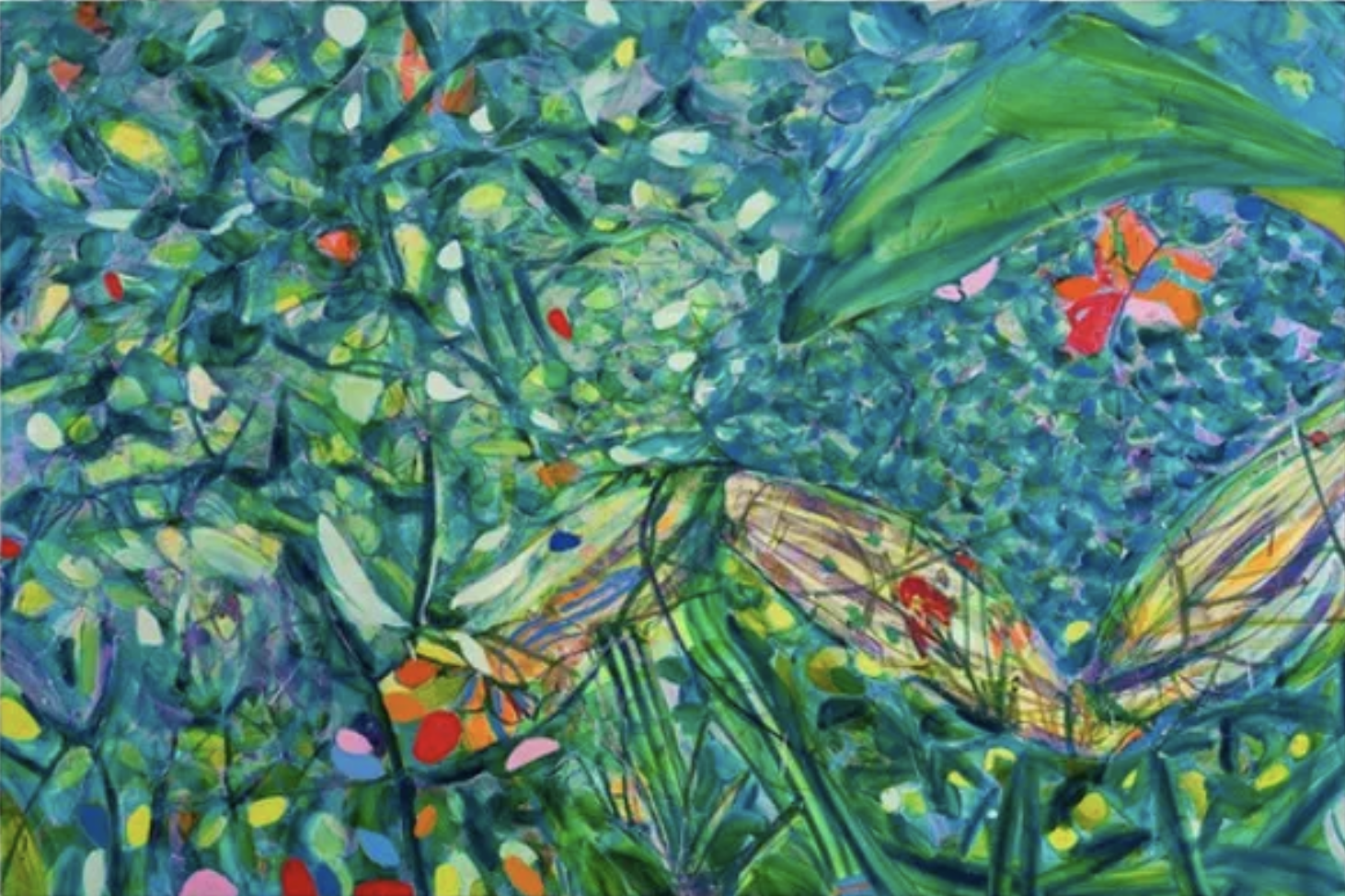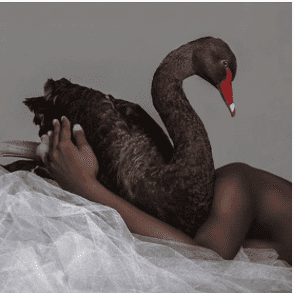An adaptation of Edwidge Danticat’s book by Lileana Blain-Cruz
Above: Miami New Drama, Create Dangerously, featuring The Cast of Create Dangerously 2, photo credit Morgan Parker.
Inside the Colony Theatre in Miami Beach, on opening night, the lights are dimmed, casting shadows over a mesmerized audience. The figures moving on stage are climbing up a mountain, set on a journey in the countryside of Haiti to a place called Beauséjour to see a relative and revisit memories. In a bewitching set design, large wooden boxes recreate the jagged edges of the mountain, brimming with lush vegetation that mimics the verdant countryside of Haiti. The climb is steep, and the main character is humorously convinced she is “drying” from it.
This journey is the anchor for Miami New Drama’s production Create Dangerously, adapted from acclaimed Haitian American author Edwidge Danticat who is also there that night, watching in the audience. After sitting in on rehearsals and watching it unfold during the preview, she has returned to see it with family and friends.
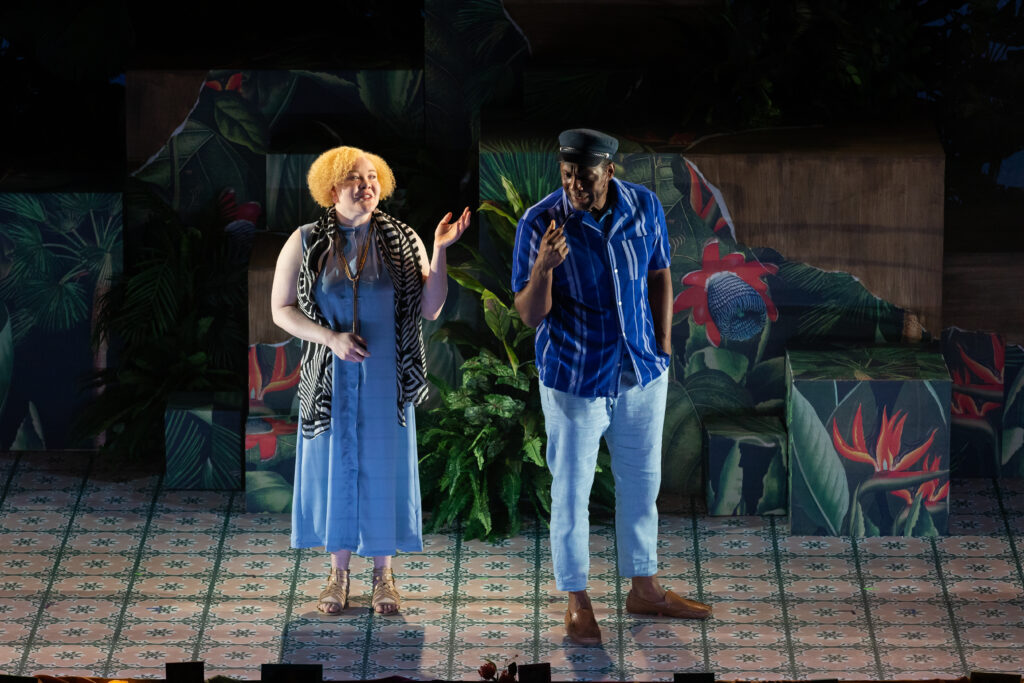
“I knew part of the opening for some people was going to be watching me watch it,” Danticat laughs. “So I decided I wanted to see it first. And I was really moved by it.”
Directed and written by Tony Award nominee Lileana Blain-Cruz, the play opened on May 6 to the public and was adapted from Edwidge Danticat’s deeply personal book of essays Create Dangerously: The Immigrant Artist at Work. Although published back in 2011, the book had resonated with Blain-Cruz, an avid Danticat reader herself. “Its ethos still feels very significant, and that’s what drew me to adapting it for the stage,” Blain-Cruz said. “It felt really natural to want to do her work. Create Dangerously was really speaking to me as an artist when I encountered it.”
Blain-Cruz herself hails from Miami and has a history with the city. She wanted to create a play that would especially draw in a Haitian audience, which she really wanted to see more of in the theater. “Edwidge’s work was like, for me, the paramount. She was a paramount writer of the Haitian experience or the Haitian American experience.”
Create Dangerously takes us through Danticat’s thoughts, inner fears and self-examination as she seeks to reconnect with her relatives. Visiting her Aunt Ilyana also sets the stage for the author to question her role in the world and her responsibility as an artist who migrated from her home to the United States, and who grapples with the urgency and danger of being a writer or an artist.
This voyage became an anchor for Blain-Cruz, because “this experience of visiting family from far away, not knowing when or how they will be seen again, was a very deep and familiar immigrant story.” Danticat leaves her beloved Tante Ilyana, not knowing when she will see her again, and then the news of her passing comes, interrupting a family moment; the loss spills over the stage and into the audience. This, for Blain-Cruz, was one of the most poignant scenes to recreate on stage and one of her favorite passages in the book.
“She [Edwidge]’s so brilliant at creating the multitude of emotions existing in the same space. […] I think I was very proud of that moment, because it felt like, for me, the artistic challenge of combining multiple feelings at once.”
Throughout this journey, the audience comes face to face with the cost that comes along with writing stories, telling the truth or engaging in means of self-expression. We revisit the brutal loss of the brilliant Haitian journalist and thinker Jean Dominique, whose assassination rattled the author as well as an entire country and led her to grapple with the meaning and danger of voicing the truth. We also revisit the lengths to which Papa Doc Duvalier went to eliminate young poets like Louis Drouin and Marcel Numa. The play spends time unpacking these emotions and tackles the very real and very raw sense of threat that writers present to despotic powers.
The play also weaves in new layers by provoking thought around the current challenges of artists whose work is threatened by conservatism. In Florida alone, where universities are losing funding for humanities topics such as critical race theory, professors’ jobs and tenure are jeopardized, and writers are finding their books banned under new laws, Create Dangerously becomes even more meaningful.
“For me, it almost feels surreal,” Danticat said. “Because there were parts in the play where they were talking about burning books, where they’re talking about burning libraries that felt so in-the-moment, bizarrely.”
Also of note is the direct address in the play to Haiti’s current socio-political situation. The country has long been wrestling with domestic terrorism at the hands of heavily armed gangs. Haitian citizens are suffering the brunt of that brutality as the murder and kidnapping rates continue to skyrocket, adding to the existing economic distress. Brittany Bellizeare, who incarnates Blain-Cruz herself as a young and curious Danticat reader and artist in the making, acknowledges the steps needed to navigate such moments in the play.
“Lileana did a great job of making sure we always acknowledged the heaviness of each scene we worked on,” Bellizeare said. “We constantly took the time to check in with each other, thanking our ancestors for the space to honor them in the way of telling their stories; we also made space for the joy and laughter as well. It was a great balance and something that definitely worked for getting through the moments of vulnerability and difficulty.”
Bellizeare and the other actors put in the work with seamless effort, morphing into other characters when needed simply by disappearing behind the staged mountains and then reappearing in different attire, different voices or mannerisms. Thiana Berrick plays Edwidge Danticat but also Michèle Montas, wife of Jean Dominique, and the moment in which we learn of his passing and see her power through this loss is unforgettable.
But perhaps one of the most memorable moments in this production comes from actors Edson Jean and Paul Pryce, who, in addition to playing Danticat’s uncle and cousin or playing the executed poets Numa and Drouin, dazzle the audience with a parallel performance of two powerful artists in Haitian consciousness: Jean-Michel Basquiat, played by Jean, and Hector Hyppolite, played by Pryce. These two embodied not just the characters but the essence and philosophy of their art. Pryce’s Hyppolite is hypnotic as he narrates with grace the life and vision of the Vodou-priest-turned-painter who holds nothing short of reverence for the loa, or spirits, who he believes gifted him with this talent.
Hyppolite painted some of Haiti’s most iconic works, recognizable through his distinctive figures, flora and fauna, bodies and spirits and vivid colors. “Playing a founding and pioneering artist in the history of Haitian art has been an exhilarating journey,” Pryce said. “My role in trying to find the man who is both artist and hougan (Vodou priest) has been interesting. This isn’t a realistic portrayal of Hector but, like his work, an expressionistic portrayal of the essence and archetype of who he might have been.”
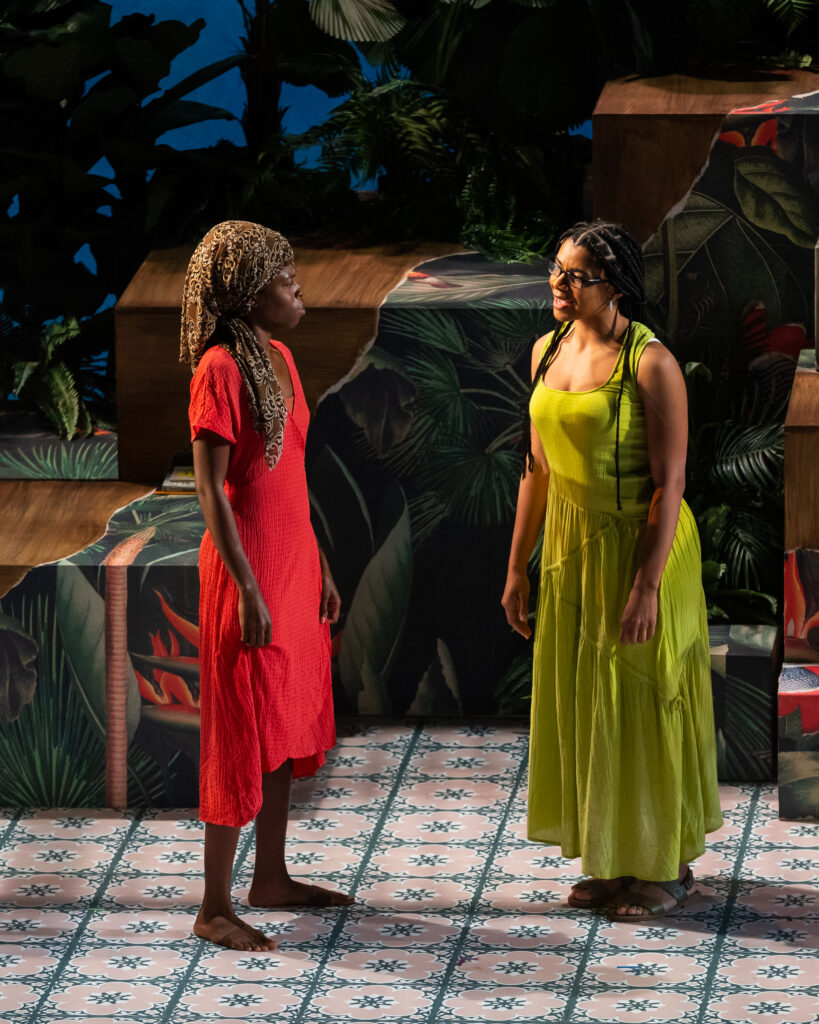
Similarly, Edson Jean’s Basquiat portrayal is steeped in ease as he lip-syncs his way through an interview between the artist and art historian Marc Miller. When he falls to his death due to an overdose, the performance hits home. The dramatic collapse on the ground is nearly earth-shattering. During this entire scene, the backdrop comes to life with the work of projection designer Hannah Wasileski, lit with colors and motifs that artfully tie the illustrations together.
Other actors on stage include Charlene Francois and Andrea Patterson, each equally magnetic in their performances. Their talent shines through not only all the emotional scenes, but also in the joyful moments that occur, and in the singing and dancing interwoven throughout the play. Charlene Francois steps out of her role as Tante Ilyana to become a dancer, perfectly fluid and agile, and then again to play the role of Ezekiel, one of Danticat’s nephews. Before the curtain falls, we end on a festive note in which all the actors break into dance and even invite the audience to participate: to dance and clap, let loose in a moment of joy, and renew hope and courage in the power of the artists, who even in the darkest moments of history, remain alert and awake and at work, creating ever so dangerously for the coming generations.
“I hope it inspires the artists […] or the young artists that are to be that it is possible, even when things are scary, to continue to make art,” said Blain-Cruz, who expressed passionate feelings about the significance of this play today. “It is possible, even when it feels like the world is ending, to speak out. That’s what Edwidge did for me, and that’s what I hope this show does […].”
Create Dangerously is showing at the Miami Beach Colony Theatre through May 28.







